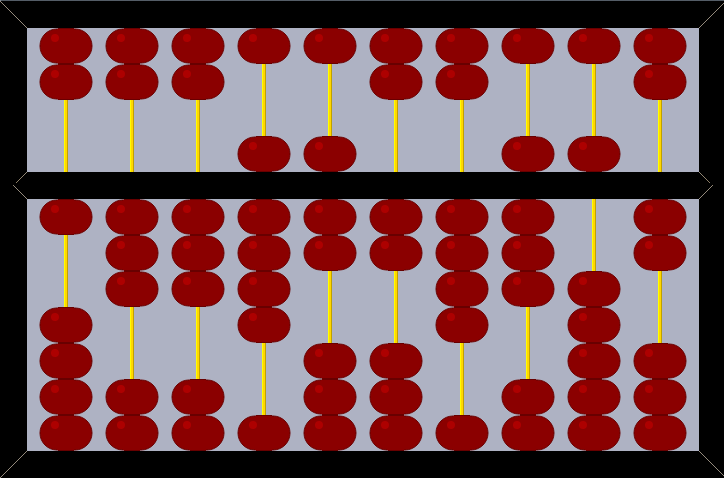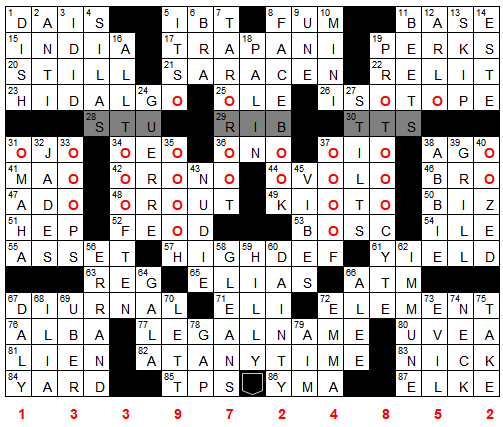S
P
O
I
L
E
R
S
P
A
C
E
Last week’s instructions turned out to be a little too vague at first – I asked for “a large number,” which led to a surprising number of incorrect answers based on a simplistic mechanism, so I later clarified that it was “a ten-digit number.” There were still a few tricky spots, though.
The thing that just about everyone noticed was that the grid contained quite a few Os, arranged in a very peculiar way. Before the prompt change, some folks decided to count those Os, think of them as zeroes, and give the number that’s a one followed by that many zeroes. This grid had 28 Os, though a lot of people missed one, and submitted “octillion,” which is a 1 followed by 27 zeroes. (A couple people found all 28 and submitted “ten octillion.”)
If you will allow me a brief aside – I generally try to avoid looking like I’m complaining about solvers, and clearly this puzzle was tricky enough, and the instructions vague enough, that I can understand landing on the above idea … but I have to say, the fact that so many of you submitted it as an answer took me aback a little bit. A puzzle with a vague hint to count all the Os, think of them as zeroes, and then translate that into a big-number word would be pretty boring to begin with, but this execution of it, with a nonstandard grid and an extremely forced arrangement of Os – two stacks of four and three stacks of three! alternating columns! all clustered around rows 4-9! – would be, well, garbage. I’m not the world’s best puzzle constructor, but I like to think you can count on me not to feed you complete drivel.
Anyway, sorry for griping. Here’s the actual solution mechanism:


The first image above is from an online suànpán (Chinese abacus) simulator. The way the abacus works – and maybe this is less well-known than I had realized? – is that beads are slid toward the dividing bar in the middle to represent each digit; beads below the bar are worth 1, and a bead above is worth 5. So the Os were the operative beads of the abacus (inclusion of the extra beads at top and bottom would, I thought, have made for a grid far more hideous than what we got), with the fifth row of the grid acting as the bar dividing the two sections of the abacus. The number, shown at bottom, was 1,339,724,852.
Why that particular number? If you plug it into google, you’ll find that it was the official population of China according to the 2010 census (the most recent official count.)
As a totally unintended bonus, I sort of thought the grid ended up looking vaguely like a Panda.
Okay, onward. Next is puzzle #50 (!), called “The Winner Is …”
The answer to the metapuzzle is either of two Academy Award-winning films.
I will once again not be able to publish a puzzle next week, so again you have plenty of time with this one. When you’re ready, submit your answer using the contact form. I hope to be back in two weeks.
To keep up with the puzzles: Twitter @pgwcc1; follow the blog for email reminders; rss feed if you’re set up for that.
Not every one needs to be a week 4.
LikeLike